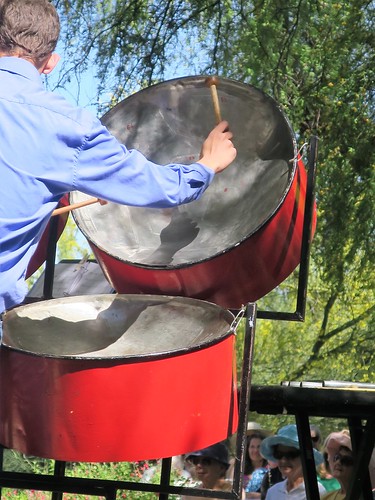 |
| Tucson Botanical Gardens, Tucson, Arizona. August 2019. |
As someone who lives within a fairly frugal budget, I can tell you that access to some of Tucson's and Arizona's cultural, natural, and recreational amenities is expensive. To wit, for one adult:
Tucson Museum of Art: $12
Tucson Botanical Garden: $15
Reid Park Zoo: $10.50
Tohono Chul Botanical Gardens: $15
Arizona-Sonora Desert Museum: $22
Saguaro National Park: $20 per vehicle
Catalina State Park: $7 per vehicle
Coronado Recreation Passes: $5 per vehicle
 |
| Tucson Botanical Gardens, Tucson, Arizona. August 2019. |
I remember how poor I was when my daughter was young. If that were today, and if I lived in Tucson, many places would be off limits to us because of the admission fees. There are many, many low-income families in Tucson.
 |
| Tucson Botanical Gardens, Tucson, Arizona. August 2019. |
In 2017, more than 18% of Tucsonans lived at or below the poverty line. Twenty-six percent of Tucson's youth lived in poverty. Normally, I would compare Tucson's poverty rate with the US average, but who cares? When it comes to access to arts and sciences cultural centers, parks, etc. in Tucson, it only matters how many Tusconans can't afford to reap the same experiences and knowledge that their more affluent cohorts in Tucson can.
 |
| Tucson Botanical Gardens, Tucson, Arizona. August 2019. |
This hurts us as a community, now and in the future.
If children don't know about - see, touch, hear, and talk to - painters, dancers, sculptors, scientists, naturalists, master gardeners, authors, astronomers, biologists, historians, engineers, mathematicians, technicians - how can they normalize these disciplines as accessible to them?
 |
| Tucson Botanical Gardens, Tucson, Arizona. August 2019. |
If we can maximize the experiential education of all of our children, and through that, maximize their potential lifetime earnings, it will reverberate through our communities, and to their children, and to their grandchildren.
Besides, access to centers of culture and nature are part of the Declaration of Independence: the inalienable right to the pursuit of happiness.
Access to centers of culture and nature adds to our quality of life.
 |
| Tucson Botanical Gardens, Tucson, Arizona. August 2019. |
So ==> When I registered for my Pima County library card, I was mighty impressed to learn about the Culture Pass. Similar to what I'd do with a book, I can "check out" the admission for two people to Tucson-area arts, nature, and sciences centers - at no cost. I have one week to use the admission and then my "loan" automatically returns to the library. I can check out a new venue the following week; two "loans" per month.
 |
| Tucson Botanical Gardens, Tucson, Arizona. August 2019. |
A companion program to the Culture Pass is the Field Trip pass program for Title 1 schools (schools that serve a large percentage of low-income students).
"The Act One Field Trip Program is a system and a solution for narrowing an opportunity gap that denies students from low-income families equal access to educational arts experiences."
Yes!
My first Culture Pass admission: Tucson Botanical Gardens. A collection of garden rooms that bid you to sit and be, to gaze and listen, without speaking, and without thinking too much.
Take a minute now, and be with me.












































